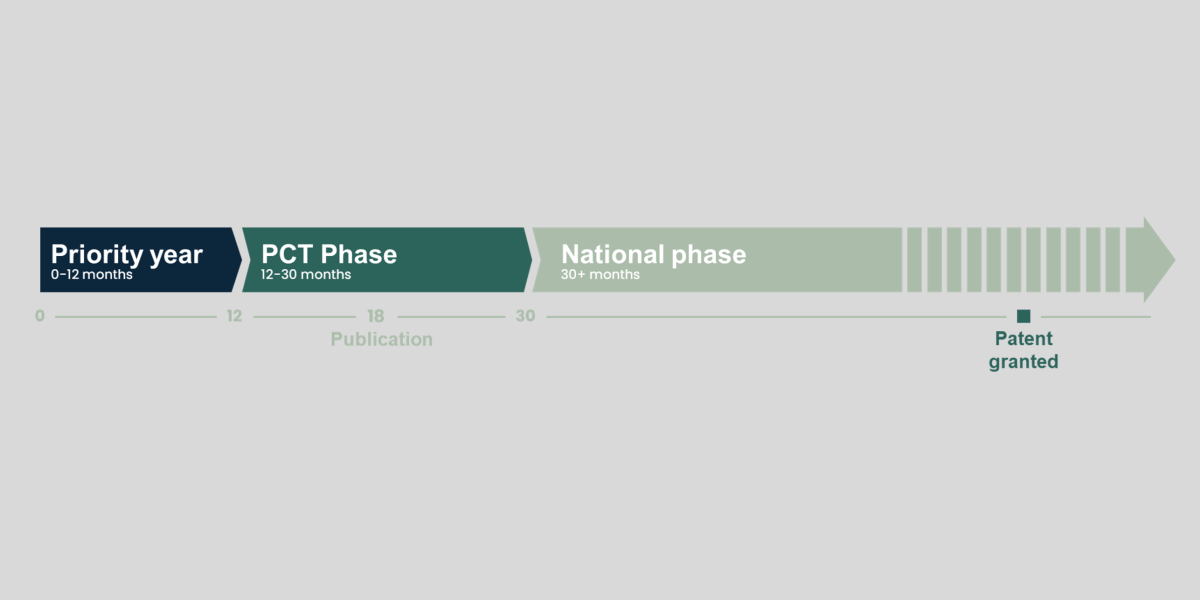The Patent Process
Great inventions deserve great protection – they deserve to be patented! This article gives an introduction to patents, the patent process and some of the important things you need to know about before you publish your invention.
Deadlines
Applying for a patent is a process that takes several years and is characterized by a series of phases and many deadlines. These deadlines are important: if we do not act before certain deadlines, the patent application will lapse and no patent can be granted. You will be advised of these deadlines by your patent attorney and please provide the input your patent attorney requests well in advance of the deadlines.
Patent before you Publish!
Only new inventions can be patented. If you have already published your idea or data, it may be impossible to obtain a patent. All types of publicly available publications count: webpages, scientific articles, posters, abstracts and oral presentations. Please let your tech transfer officer or patent attorney know as soon as possible if you wish to publish your findings – also if a priority application has already been filed!
Priority Year
The first patent application is the priority application. The date on which this application is led is “Time zero” for the rest of the deadlines. The priority year lasts exactly 12 months and during this period the application may be updated with new data and text. If you have new data that supports the invention, it is recommended to include these by updating the priority application.
PCT Phase
The priority application is converted to a PCT application absolutely no later than on the 12 month date of ling the priority application. If the patent application is to be updated prior to ling the PCT application, this must be done in good time. Once the PCT application has been led it is no longer possible to add or change the text – only the patent claims can be amended – generally to a more narrow scope.
PCT stands for “Patent Cooperation Treaty” and is a unified, international prosecution system for handling patent applications which uniforms the patenting process and keeps the costs low while delaying the expense of national stage ling. Please note that while the PCT is an international collaboration – there is no such thing as an international or worldwide patent. 18 months from the priority date, the application will be published so everyone is free to read and learn about your invention.
During this phase, the PCT authority will evaluate the patent application and we may respond to the evaluation by submitting our point of view – before a specied deadline. The aim is to have a fruitful discussion with the PCT authority leading to a positive evaluation before the application at the 30 month deadline leaves the PCT phase. A positive evaluation in the PCT phase usually makes the national stage prosecution easier and cheaper leading to faster grant of the patent.
National Phase
Patents are national rights why patent applications must be led in each and every country in which it is relevant to obtain patent protection. The deadline for ling national patent applications is either 30 or 31 months from the priority date. It is very important that your patent attorney early on is notified of which countries you seek protection in, as many countries require that the patent application is translated into the national language of each country. The prosecution of the patent application continues during the national phase in order for the patent application to comply with national patent law. Once the national patent authority is satisfied that the patent application adheres to all relevant laws then the patent can be granted.
Patents
- A patent is an intellectual property right (IPR) that is granted after a patent application goes through a prosecution process that can take from 2 to 7 years or more depending on the ling strategy and technical eld of the invention.
- Patents are national rights and are time limited monopolies that may last up to 21 years counting from the priority date.
- Having a patent allows the patentee (owner) to forbid others from using, importing, selling or marketing the patented invention. The patentee does however not have an automatic right to use or produce the patented invention themselves as other patents may dominate the rights of the patentee meaning that there is no freedom to operate (FTO).
- Since patents are property rights, they can be sold (once) or licensed out or in like any other property right by the patentee (owner) of the patent.
Need to know more?
If you wish to know more about the patent process, feel free to contact any our experts.
